Space News
Nasa
388

Image Credit: Nasa
NASA’s X-59 Completes Electromagnetic Testing
- NASA's X-59 research aircraft has completed electromagnetic testing at Lockheed Martin Skunk Works in California, ensuring its systems work together safely without interference.
- The testing focused on internal electronic systems to prevent disruptions in critical operations caused by electromagnetic interference.
- The X-59 aims to fly faster than the speed of sound, reducing sonic booms to quieter thumps as part of NASA's Quesst mission.
- Engine tests were recently completed as the aircraft progresses through ground tests for safety and performance.
- Electromagnetic interference testing also examined landing gear and fuel switch shutoff functionality to ensure proper system operation.
- NASA conducted proximity tests between the X-59 and F-15D aircraft to gather shock wave measurements, confirming compatibility and safety.
- Data from the X-59 during testing was transmitted to NASA's control facility to monitor for anomalies before in-flight operations.
- Following electromagnetic testing, the X-59 will proceed to aluminum bird tests, taxi tests, and eventually its first flight.
- The X-59's successful electromagnetic testing brings it one step closer to demonstrating quiet supersonic technology for commercial supersonic travel.
- The completion of these tests on the ground reduces risks and ensures system performance and compatibility before airborne operations.
Read Full Article
23 Likes
Spaceflightnow
433

Live coverage: SpaceX to launch Intuitive Machines’ Moon lander on Falcon 9 rocket from the Kennedy Space Center
- Intuitive Machines is preparing to send its Nova-C lander, named Athena, to the Moon on a SpaceX Falcon 9 rocket from the Kennedy Space Center.
- The mission, scheduled for March 6, aims to last 10 Earth days and is part of NASA's Commercial Lunar Payload Services Program.
- The company received over $62 million from NASA to transport two science payloads to the lunar surface.
- Intuitive Machines is optimistic about the upcoming mission, building on lessons learned from its previous lunar mission - IM-1.
- The new mission will land at Mons Mouton near the Moon's South Pole, with a strategic importance regarding national interests.
- Athena will carry various payloads, including cameras for public images and instruments to examine the lunar regolith for volatiles gases and water ice.
- The mission also includes commercial payloads like rovers, a lunar surface communications system, and a tech demonstration for future Moon explorations.
- Intuitive Machines will deploy a rocket-propelled drone named Grace to extend exploratory reach, conducting hops in challenging lunar regions.
- Grace will carry science payloads to study stable water ice deposits and lunar surface temperatures in permanently shadowed regions.
- The IM-2 mission will also host separate rideshare payloads, including NASA's Lunar Trailblazer and AstroForge's Odin spacecraft on a flyby mission to an asteroid.
Read Full Article
26 Likes
Digitaltrends
164

Image Credit: Digitaltrends
How to watch NASA launch its cosmic detective mission, SPHEREx, this weekend
- This weekend, NASA is set to launch a new astrophysics mission called SPHEREx, which aims to investigate the origins of the universe.
- The launch will take place at Space Launch Complex 4 East (SLC-4E) at Vandenberg Space Force Base in California.
- In addition to SPHEREx, the rocket will also carry a set of four small spacecraft called PUNCH to study the sun.
- The launch can be watched on NASA's YouTube page or by attending the virtual event.
Read Full Article
9 Likes
Universe Today
424
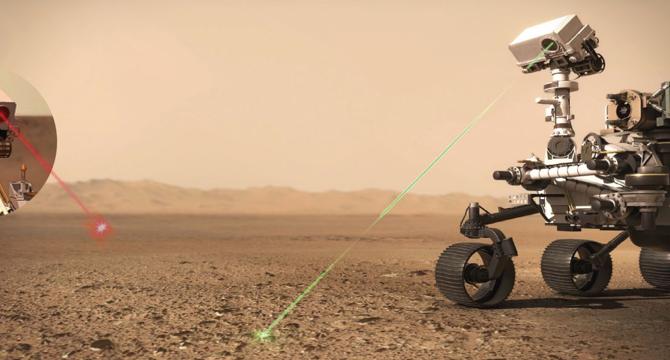
Image Credit: Universe Today
This Laser Could Find Fossil Microbes on Mars
- Life on Earth may have originated in warm ponds, and similar conditions may have existed on Mars billions of years ago.
- NASA's Perseverance rover is equipped with a laser to analyze rocks and search for organic compounds as potential biosignatures of ancient life on Mars.
- A new laser is being developed to detect microbial fossils in gypsum deposits on Mars, based on the rapid formation and preservation potential of gypsum.
- Research published in Frontiers in Astronomy and Space Sciences outlines the method for detecting biosignatures in Martian sulfate minerals.
- The study conducted in Algeria tested the method on gypsum deposits that mimic those found on Mars and identified fossil filaments and necessary chemical elements for life.
- Presence of dolomite, clay minerals, and pyrite surrounding the gypsum indicates the potential existence of ancient life on Mars.
- Additional tests are needed to distinguish true biosignatures from abiotic mineral formations and improve confidence in detecting life on Mars.
- Future Mars missions like ESA's Rosalind Franklin rover could benefit from this technology to search for evidence of past life on the planet.
- If successful, this method could be integrated into upcoming Mars rover missions to enhance the search for fossilized microbial life.
- Developing reliable techniques for detecting ancient life on Mars is crucial for advancing our understanding of the planet's past and potential habitability.
Read Full Article
25 Likes
Discover more
Brighter Side of News
438

Image Credit: Brighter Side of News
NASA’s Lunar Trailblazer begins mission to find hidden water on the moon
- NASA's Lunar Trailblazer mission, set to launch on February 26, will map water sources on the Moon using a thermal imaging camera built by the University of Oxford.
- The mission aims to provide data on lunar water deposits, which could be utilized for various purposes including drinking water, oxygen, and rocket fuel.
- Equipped with advanced instruments, the spacecraft will analyze the lunar surface at a resolution of 50 meters per pixel.
- Special focus will be on the Moon's South Pole craters where scientists estimate significant water ice reserves.
- The Lunar Thermal Mapper (LTM) and the High-resolution Volatiles and Minerals Moon Mapper (HVM3) will work together to create detailed lunar water maps.
- The mission funded by NASA's Small Innovative Missions for Planetary Exploration program will launch as a secondary payload, aiming for detailed water detection and mapping on the Moon.
- The spacecraft will utilize a low-energy transfer method for its journey to the Moon, relying on gravitational forces for trajectory adjustments.
- Scientists hope to understand the origins of lunar water and its behavior under different conditions, addressing theories on how water arrived and persists on the Moon.
- The mission's findings could play a crucial role in future lunar expeditions and deepen understanding of water distribution on other planetary bodies.
- With collaborative efforts and innovative technology, the Lunar Trailblazer mission represents a significant step towards sustainable human exploration of the Moon.
Read Full Article
26 Likes
Mensjournal
73

Scientists Announce Major Update About Earth-Threatening Asteroid
- Astronomers have announced that there is no longer a viable threat from asteroid 2024 YR4.
- The odds of the asteroid colliding with Earth in 2032 have been reduced to 0.001 percent according to the European Space Agency, and 0.004 percent according to NASA.
- There is a small chance of the asteroid coming into contact with the moon in 2032, with odds of 1.7 percent.
- Scientists will continue to track the asteroid until 2028 and plan to use the Webb Space Telescope to determine its exact size next month.
Read Full Article
4 Likes
Nasa
109
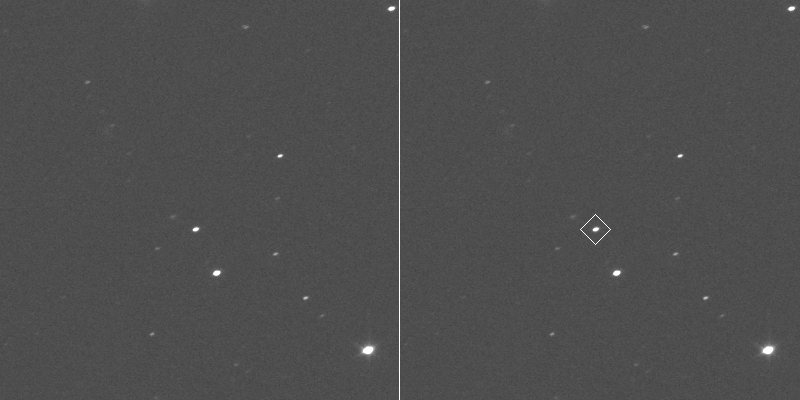
Image Credit: Nasa
NASA’s Lucy Spacecraft Takes Its 1st Images of Asteroid Donaldjohanson
- NASA's Lucy spacecraft has captured its first images of the asteroid Donaldjohanson.
- The spacecraft will pass within 596 miles of the 2-mile-wide asteroid on April 20.
- This encounter with Donaldjohanson will serve as a dress rehearsal for Lucy's main targets, the Jupiter Trojan asteroids.
- Lucy will continue to image Donaldjohanson over the next two months to ensure an accurate flyby.
Read Full Article
6 Likes
Nasa
132
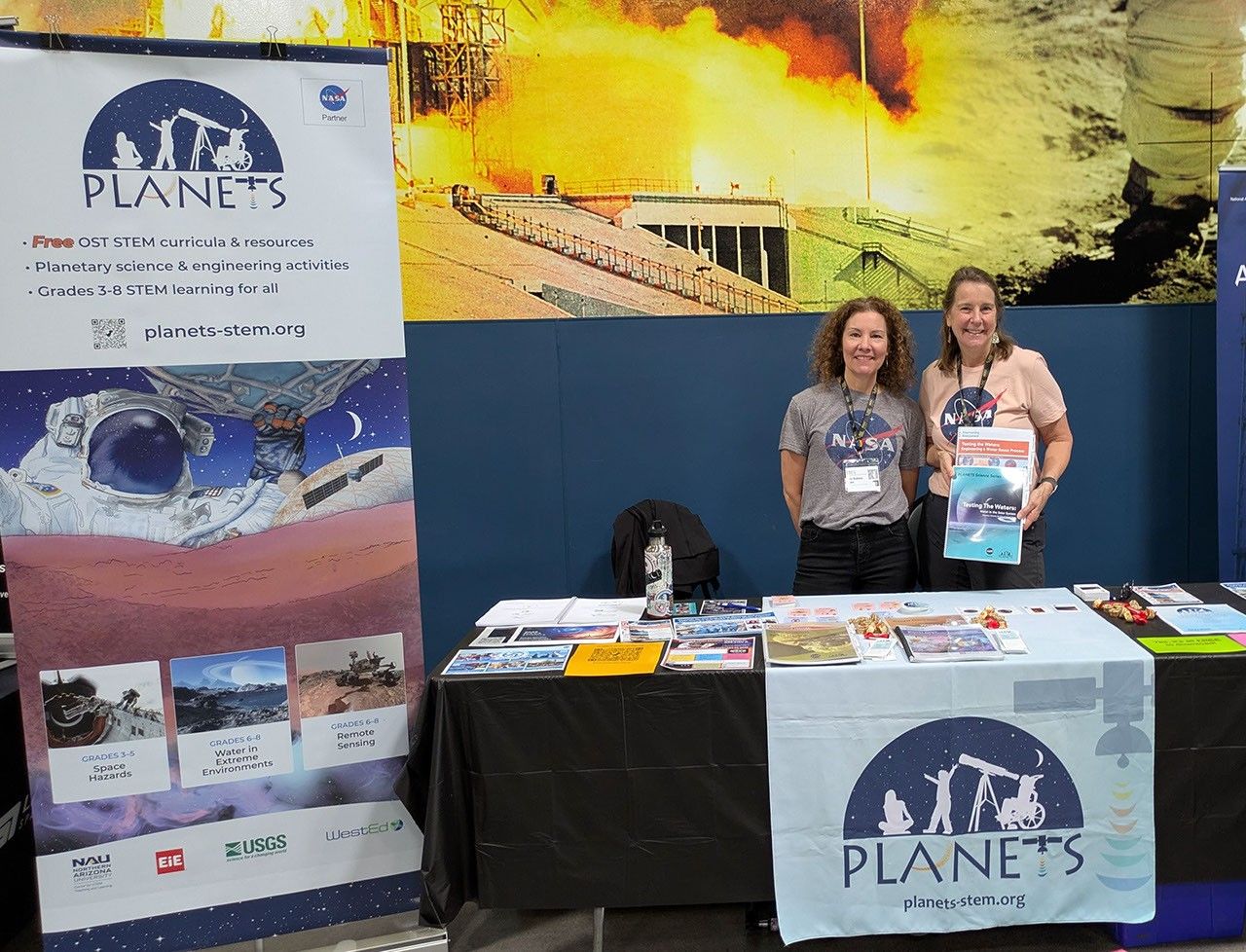
Image Credit: Nasa
Sharing PLANETS Curriculum with Out-of-School Time Educators
- Out of school time (OST) educators work with youth in afterschool, community, and camp programs.
- The NASA Science Activation program’s PLANETS project provides curriculum and virtual support on planetary science and engineering.
- PLANETS offers three curriculum units focused on themes from NASA’s strategic priorities and mission directives in planetary science.
- The PLANETS project recently exhibited at national conferences to share the free NASA partner resources with educators.
Read Full Article
7 Likes
Universe Today
338

Image Credit: Universe Today
Can We Develop a More Accurate Habitable Zone Using Sulfur?
- The habitable zone is a range of distance from a star where conditions can support liquid water and potentially life on a planet's surface.
- A recent study suggests that sulfur chemistry can be used to better define the inner border of a star's habitable zone.
- The presence of atmospheric sulfur on an inner planet indicates the lack of surface oceans, and thus a narrower habitable zone.
- However, high levels of ultraviolet light can break down sulfur compounds, making the sulfur test ineffective for some potentially habitable planets around red dwarf stars.
Read Full Article
20 Likes
Livescience
31
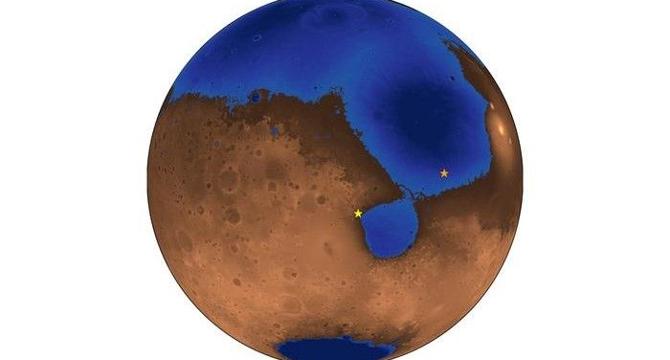
Image Credit: Livescience
Mars was once a 'vacation-style' beach planet, Chinese rover scans reveal
- Ground-penetrating radar by the Chinese rover Zhurong reveals that Mars may have once had sandy beaches along the shoreline of a large ocean.
- The ocean, called Deuteronilus, existed over 3 billion years ago and could have supported life.
- Zhurong discovered evidence of ancient beaches and river deltas on Mars, indicating wind, waves, and a beach-like environment.
- These findings provide insight into Mars' ancient habitable environments and could help identify locations to search for past life.
Read Full Article
1 Like
Metro
187
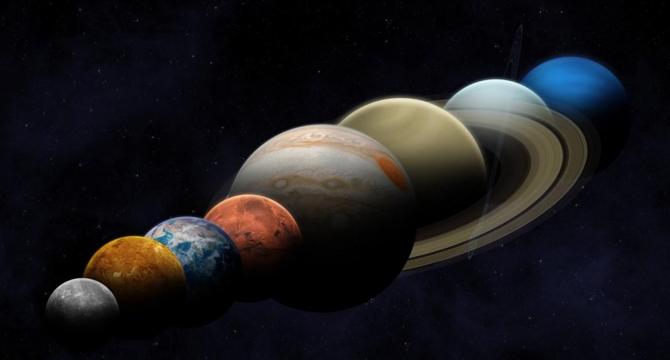
Image Credit: Metro
Every planet will align this week for last time until 2040 – here’s how to see it
- Every planet in our solar system will be visible at once for a few evenings around February 28, 2025, marking a rare event not to occur again until 2040.
- Mercury, Venus, Saturn, Jupiter, and Mars will be visible to the naked eye, with Uranus and Neptune visible with a telescope.
- The best time to see the planetary alignment this week is just after sunset on Tuesday, Wednesday, Thursday, and Friday, starting February 25.
- Uranus and Neptune may not be visible without a telescope, while Mars, Venus, and Jupiter will be more prominent.
- A planetary alignment is when several planets gather on one side of the Sun, not necessarily in a straight line.
- There will be a seven-planet alignment on February 28, a rare occurrence that happens periodically.
- While planetary alignments are visual phenomena, they do not significantly affect Earth in terms of tides or weather.
- To view the planets aligning, experts suggest going to dark areas away from artificial lights and using finder charts or stargazing apps.
- Observing the brightness of the specks in the sky can help differentiate planets from stars during this celestial event.
- This rare celestial event presents a unique opportunity to witness the planets aligning in the night sky, offering a spectacular sight for stargazers.
Read Full Article
11 Likes
Nasa
187

Image Credit: Nasa
Diamonds from NASA’s X-59
- NASA’s X-59 aircraft demonstrates Mach diamonds during engine tests.
- Engine tests proved the aircraft's ability to generate supersonic flight thrust.
- The X-59 is part of NASA's Quesst mission to reduce sonic booms during supersonic flight.
- The successful engine tests are a step towards achieving commercial supersonic flight over land.
Read Full Article
11 Likes
Universe Today
150
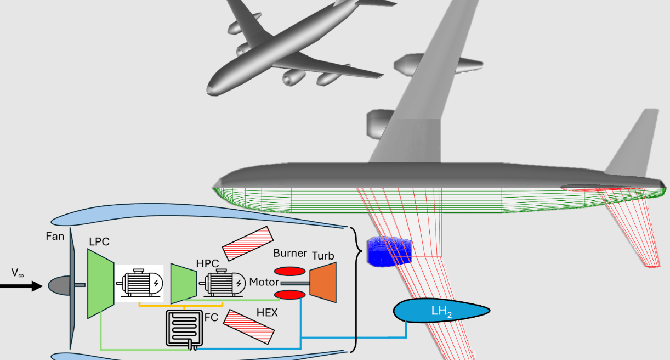
Image Credit: Universe Today
A Hybrid Hydrogen Drive Train Could Eliminate Aircraft Emissions
- NASA has supported the development of a hybrid hydrogen-based engine for aircraft to eliminate emissions.
- The engine, called Hy2PASS, uses a fuel cell and a gas turbine in a hybrid configuration.
- By decoupling the compressor from the turbine, the system achieves increased efficiency and eliminates emissions.
- The project is in the initial phase, focusing on proving the concept and optimizing energy requirements.
Read Full Article
9 Likes
Nasa
447
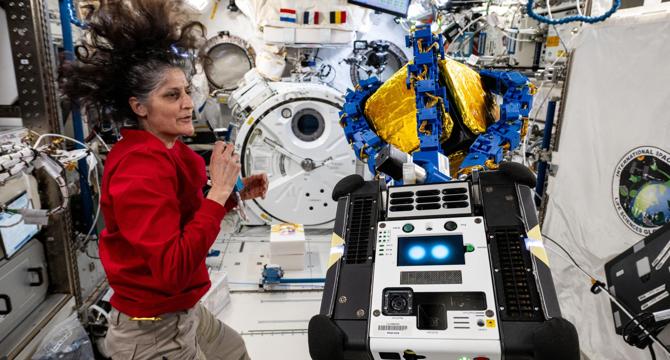
Image Credit: Nasa
Free Flying Robotics, Space Agriculture Ahead of Cargo Mission Swap
- Astronaut Suni Williams tests Astrobee robotic assistant's ability to autonomously capture simulated orbital debris.
- NASA Flight Engineer Don Pettit installs research components in the Advanced Plant Habitat, focusing on growing Red Romaine lettuce.
- NASA astronauts Nick Hague and Butch Wilmore perform science hardware maintenance and cargo transfers.
- The Progress 89 cargo craft departs the International Space Station, to be replaced by the Progress 91 cargo craft.
Read Full Article
26 Likes
For uninterrupted reading, download the app